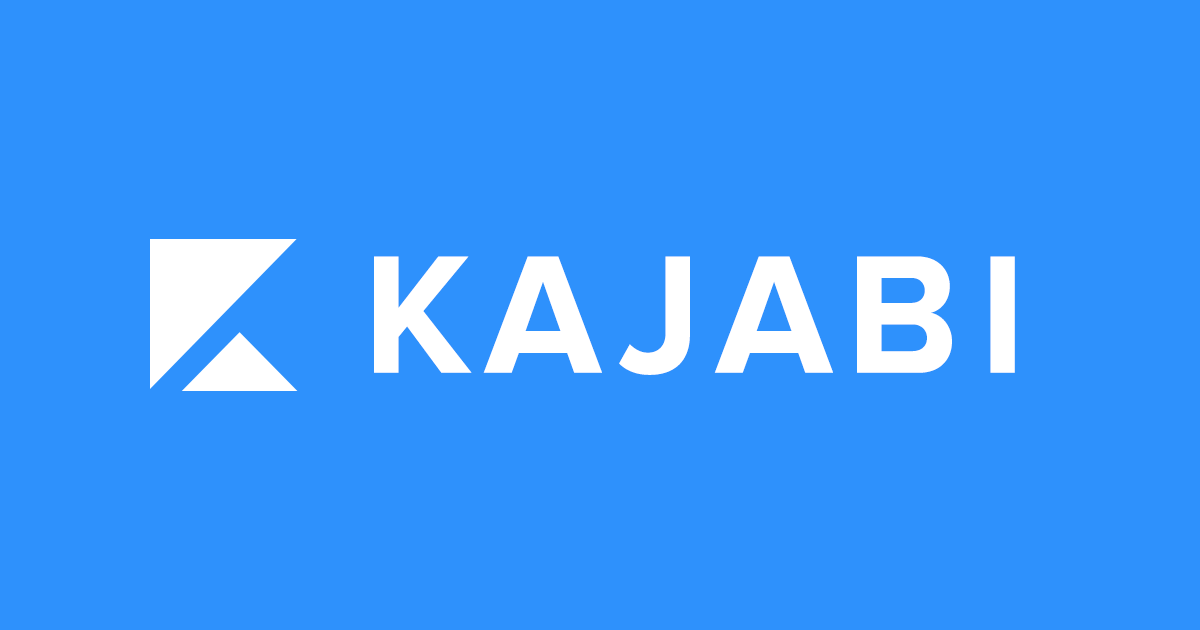Many learning management system (LMS) platforms come with many important features can be utilized when creating content of high quality. Although there are plenty of sites that let you utilize advanced marketing tools to advertise classes to your intended audience, some might not provide all the features. While some provide easy-to-use tools to build courses, there’ll also be few that may have an editing experience so complex that it turns off its users.
Within the sea of online course platforms, there are a few that offer not just the basic editing interface but also an array of sales and marketing functions. Additionally, they also offer almost everything you could think of such as 24/7 assistance and training materials to top-quality analytics. All-in-one platforms for courses allow you to explore beyond your limits and one of the platforms which can provide this is Kajabi.

In a nutshell: Kajabi: What exactly is Kajabi? Kajabi Blog Versus WordPress
Kajabi is an internet-based platform which lets you create and sell your course content to your student audience. It is marketed as a complete service and platform for edupreneurs, Kajabi offers edupren all aspects of their lives with the most efficient and essential features needed to not just build a professional-looking website for your courses but also allow them to grow to greater heights. Kajabi has been praised by the media and is regarded as one of the best online courses platforms, earning an overwhelming rating of 4.6 out of five on Trustpilot.
What makes Kajabi so well-liked and appreciated by its users? Well, there are quite numerous reasons that make the platform extremely easy for anyone to use. Firstly, it’s the extreme simplicity of usage. From the course creation to the marketing services almost all of the Kajabi features are designed to be easily digestible for people who are only beginning to get started in the world of e-learning. The majority of them are advanced, giving administrating instructors the added edge over other instructors. Lastly this allows students like you run and develop a course-making business without having to go elsewhere if anything else is not available. Kajabi offers all the equipment that one could need in order to live up the ‘one-stop-shop’ moniker.
What Does It Let You Do?
There are numerous ways that Kajabi lets you use as an all-in-one online course solution. We’ve compiled a list, in bullets, of its important attributes that you ought to watch out for if you’re considering it. Simply put, Kajabi lets you:
- Create interactive and engaging classes using a range of customizable tools, media files, and templates that you can choose according to your preference;
- Create a professional website that can display your course materials and products, as well as your own blog to keep your students informed about what’s new.
- Efficiently make use of websites, landing pages and checkout sites and other effective ways to improve your earnings, expand your reach over the boundaries, and generate higher conversion rates.
- Select the method you want to invoice your courses and other services to your students – whether it’s a one-time fee or a subscription for a month;
- Create effective sales funnels with no any difficulties by making use of funnel blueprints and templates;
- Make use of its internal marketing and analytics suite that includes the ability to send out e-mails and CRM as well as automated tools.
- Manage and create your affiliate links, and
- Explore an array of community, customer service and training materials and features, including Kajabi University.
Famous Names that have Used Kajabi
Kajabi is trusted by more than 16,000 organizations and big-name personalities. Kajabi is the preferred choice of some of the well-known names that are from various industries, such as online marketing expert Amy Porterfield, best-selling book author Mel Abraham, personal development coach Brendon Burchard fitness expert and entrepreneur Jenine Dilts Bayman, and actor-coach Ross Grant.
Kajabi is home to thousands upon thousands of courses, accessed and explored by over 35 million students all over the world. As of this the time this article was written, Kajabi boasts more than $650 million of revenue since its establishment in 2010.
Kajabi’s Pricing Strategies
The three pricing plans Kajabi provides are very different from other online course creation tools in that they’re more expensive. With monthly rates that start at just $119, it’s no wonder that this might be an issue for those who be interested in giving it a try. However, when you consider the number of important features included in each plan, pricing is understandably reasonable.
Kajabi’s pricing plans begin by offering the Basic plan, which costs $149 per month or $119/mo if billed annually. This plan lets you get to create three products, gain up to 1000 active users, as well as design a website that you can modify using the tools provided by the platform. Included are unlimited landing websites, indefinite marketing e-mails as well as unlimited access to helpful resources, including one-on-one customer support as well as Kajabi University.

> > Click Here to Check Out Kajabi < <
Apart from the Basic plan, there is the Growth plan which is Kajabi’s most popular plan for $199 per month or $159/month if you pay annually, as well as the Pro plan at $399 monthly or $319/month yearly, which is filled with all the features you’d want when you are designing and selling your course. Kajabi is currently not offering a free plan option. However, a 14-day free trial is available for all three plans. A trial extension that runs for up to 30 days available on certain blogs, so if you wish to test the waters and see if Kajabi’s the right choice for you, the limited free trial is the best way to go.
Kajabi: The Good and the Bad
The Pros and Cons – What We Really Like About Kajabi
- The integrated marketing suite. Kajabi’s marketing suite in-house of tools, including e-mail marketing and automation, are optimized for businessuse, and you don’t have to connect with any other third-party service to do that!
- The software for sales funnels. Another of the most popular features on the platform is the sales Pipeline Builder lets you make use of proven and easily accessible blueprint templates. No need to overcomplicate yourself!
- Customization without limits. From the creation of professional-looking courses down to the custom website, Kajabi lets you customize to your heart’s content – and even build your brand from scratch.
- The user-friendly and simple site as well as course editor. Making content with the website and course builders hasn’t been this easy and quick, as it requires less time and effort to get everything done.
- Unlimited integrations are endless. In addition to native integrations that integrate with the ten marketing, e-commerce and analytics services, connection to Zapier’s app allows users to investigate and select from more than one thousand non-native platforms to increase efficiency.
- Establishing meaningful relationships with your students and instructors. Kajabi’s community feature lets you connect with students in any of your courses. It also lets you connect, network, and celebrate with tons of teachers who happen to be in the same position as you.
The Cons – Things We Don’t Like
- The steep pricing plans. Kajabi’s three pricing plans are greater than the typical monthly prices that other providers offer. There’s not a free option neither.
- There is no built-in tool to issue certificates. It is possible connect to a third-party certificate software if you want to make custom-designed certificates of various types.
- Not enough tools for student-instructor engagement. We’re not happy about the absence of some particular features, including adequate discussion forums, as well as the ability to randomly distribute tests or assignments. Kajabi Blog Versus WordPress
An Overview of the Kajabi Features
User-Friendliness and Experience
One thing we love the most about Kajabi is the surprisingly easy user experience. First, the majority of the User Interface (UI) is organized. If you may notice on the dashboard menu, you will notice that all features are organized into five main sections – Website Products, Sales, Marketing and People. The menu’s design leaves no space for obstruction, since some of the elements that are associated with the specific section can be collapsed. The UI style is very uniform and reflects Kajabi’s “all-in-one” trademark. You get to create an online landing page, change your course and interact with your fellow instructors through one website.
The search assistant is a tool that is useful whenever you want to look for something hard to find. The Kajabi Assistant is found at the top part of the dashboard, in the form as a “search bar it allows you to search for items and tools on the website by typing in the words. Like we said the website builder and course builder sections are drag-and-drop and make the process much easier without needing to learn how to navigate the site. Kajabi is more user-friendly and has a less arduous learning curve compared to several of its peers. It also supports multiple languages other than English in case you want to expose your content to broader viewers.

> > Click Here to Check Out Kajabi < <
Course Development and Engagement
Product Blueprints
When you go through Kajabi’s course creation function, you may soon encounter a list of product or course templates or the way it calls it blueprints. Each of the product blueprints is different in its structure and style and can be easily modified to meet the needs of any instructor.
Included among the listed blueprints are Mini Courses and Online Courses as well as Drip Courses. Mini Courses are quick-form courses that are usually created as a means of gaining brand value, while online Courses are full-version types that have a complete structure of content created to offer the “world-class” education experience. Drip courses, on the other hand, are courses which are planned over a set series of days or weeks. Also called Evergreen Training courses, it’s a much more convenient method to distribute your content when you and your students are busy working on other projects.
Kajabi may be known by many as a renowned premium course maker. However, in addition to the kinds of courses offered, the blueprints let you create a membership space that allows your customers to access exclusive content as well as a coaching session for 12 weeks. There’s also a blank template where you can create a course or product from scratch!
Categories Posts, Categories, and Content Uploads
When you explore the course builder you’ll notice an outline of sections and lessons that have been automatically added when you select one of the blueprints for your course. In the case of Kajabi, these sections and lessons are known as groups and posts or. Posts are the places where you insert various types of content, like text, videos images, and text, while the categories serve as folders where the posts are stored.
It is also possible to include subcategories of posts within one category in order to arrange your content in a flexible way. You can also drag and rearrange the outline. Kajabi accepts a variety of media and text files to be added to your posts, such as MOV and MP4 files WAV and MP3 files PDFs, and even Word documents. Upload any of them via your computer’s folders, or file-sharing cloud platforms like Google Drive and Dropbox. You can also add existing URLs of your videos to your posts!
As with a handful of other course-making platforms, Kajabi allows you to utilize the bulk upload feature. Like the name implies that you can upload all the files you have uploaded to your course in the same tab. This is a great option particularly if you’re performing other tasks.
Course Player Templates
Kajabi offers a lineup of over 10 themes for course players. Unlike other LMS platforms that only allow you to be allowed to select one or three themes, Kajabi lets you have the freedom to choose several themes to suit various products. Similar to the course outline builder, it’s relatively simple to modify any of the themes to match your preferences. You can also incorporate elements that represent your brand including logos, images, and font design into the course player to add a your own personal style. Kajabi Blog Versus WordPress
Questions and student interactions
Kajabi includes a quiz function called Assessments where you get to make quizzes and assignments and include them as part of your course. Assessments are a helpful method of determining whether your students have learned something from the curriculum you’ve given them. With the assessment option, you are able to choose from three different question types: multiple-choice, multiple-selection, and paragraph-style. You can even set a passing score to motivate your students in engaging with your material more.
Apart from that, it is also important to note that the LMS website has made progress in creating areas for teachers and students to interact. With the Community feature, students have access to participate and leave comments on all of your courses on their dashboards. It is possible to write your blog posts for discussion with other students your previous lessons and also your future content. The community feature is offered either as a stand-alone product or as component of your member.

> > Click Here to Check Out Kajabi < <
Website Design and Customizability
Why should you upload your course materials on your website’s domain or WordPress website when Kajabi provides the platform and the tools to create one within the platform? Kajabi provides unlimited web hosting across the three plans of pricing. What’s great about this is you’re guaranteed instant safety and security with an automated SSL certification as well as an experienced team of experts to maintain your site.
You’re also given the liberty to customize your domain, as well as choose from a variety of professional, one-of-a-kind themes that you can modify to your liking! The possibilities don’t end there: if you’re an expert edupreneur and are a member of the Growth plan and above you are able to use custom-designed themes that are built to meet your ever-growing needs and also eliminate any Kajabi branding and replace it with your own!
Page Builder
Like the course builders we’ve talked about previously, Kajabi’s page builders lets you modify any of the available themes for websites using a set of user-friendly and intuitive editing tools. If you continue to explore you’ll be presented with a variety of customizable blocks and sections. They’re basically like the categories and posts from when we’ve discussed our course building tool. Blocks are the components that comprise the site’s content including media files, text as well as clickable button. Sections, on the other hand are formed by a variety of neatly-arranged blocks.
There are more than 40 pre-designed section templates that you can pick from the dashboard of the page builder. As we’re all glued to our phones and tiny tablets it’s logical to use Kajabi to let your site automatically adapt to a mobile layout. You can go an extra mile by picking the elements of your website you want for your members to view. With all the tools you need to create your website how you would like it to look, Kajabi’s page builder is not just incredibly flexible, but also easy to manage.
Blogging and Other Useful Website Features
Other LMS platforms may not provide this feature, however Kajabi allows you to make a section of your website dedicated to your blog where you can publish information and comments on your course content. If you want to make the most out of your Kajabi-made site, the service provides you a space where you can post your blog posts without limitations. Start by creating the blog post by making your own using Text Editor. It is possible to incorporate SEO elements if you want to reach a larger audience and organize your blog posts into various categories, and even alter the way you would like your blog’s entire section to look.
Kajabi’s built-in blogging features might not be on the same level as WordPress or Blogspot However, it comes with enough tools to allow it to be managed. Additionally, you can also create podcasts that you can promote on your site. You may upload recordings of your podcasts to be hosted on your website and then distributed to major podcasting platforms, such as iTunes Podcasts as well as Spotify. If you upload podcast episodes, you have two options: release the podcast as a public one for free , or create an exclusive private podcast that only your members have access to. Kajabi Blog Versus WordPress

> > Click Here to Check Out Kajabi < <
Marketing and Sales and Marketing
Part of what makes Kajabi so well-liked among entrepreneurs is its slew of sales and marketing tools that are supremely user-friendly and easy to even non- marketing experts to use!
E-mail and Affiliate Marketing
A major draw for the masses, Kajabi’s built-in E-mail marketing functions allow you to send emails about your course and websites to your members who are subscribed students within the comforts of the platform. But you may be surprised that it does more than sending e-mails. With the help of Kajabi Automations, you get to build automated sequences of e-mails initiated by different types of user actions. For example, when a student is successfully logged in to one of your courses following the checkout process, a welcome email will be automatically sent directly to the student’s inbox. If another course is not performing then an upsell message is sent to suggest an improvement Kajabi Blog Versus WordPress
You can create as many emails to your campaign as you like and schedule each one according to your preferences. You can choose the members you want to receive these messages. The management of e-mails has never been this complete and easy to manage. Unlike other LMS websites, Kajabi already provides you with e-mail marketing tools that don’t require integrating with other third-party platforms in order to make it work.
Apart from that, Kajabi also has an affiliate marketing feature which allows you to designate some of your members as affiliates in order to in promoting your site on behalf of you. In addition to paying them the commission rate it is also possible to track their performance to see how well they contribute to increasing your conversion rates and click rates. Kajabi Blog Versus WordPress
Pipeline Builder
Another one of Kajabi’s overall top features can be its Pipeline Builder, where you can create custom marketing funnels that do not have any overly complicated difficulties. While other platforms provide similar features that require much more time and effort, Pipeline Builder is a breeze to use. Pipeline Builder is designed to be quick and simple that even the uninitiated are able to make the most of it. This stunning feature allows you to choose from a variety of pre-designed funnel templates or pipeline blueprints. These include the following:
- Freebie – for whenever you want to offer a freebie as a lead magnet to build your database.
- Sales Page OVO – to use whenever you want to convince your target customers to purchase your product via the sales page
- Product Launch OVO – to use any time you’re launching a course or any other product
- Zoom Webinar OVO – for any time you wish to promote your products through web seminars
- Free Book OVO – to use anytime you’d like to showcase your content the free digital book that you can download
- Coaching Campaign OVO is for any time you’re promoting your courses through an array of coaching sessions
- Blank blueprint – for whenever you want to build the sales funnel you want from beginning
When you choose from one of the pipeline blueprints Kajabi instantly creates a set of pages and emails you’ll need to pull off an effective sales funnel. You can customize how you wish your funnel to look to your customers. You can even alter the design of your checkout and landing pages, for instance you can change the theme to something different The library is full of 40+ pages templates you can choose from.
Optional Payment Options and Price
Kajabi lets you integrate seamlessly with the payment gateway platforms Stripe and PayPal to ensure that your students can choose one of them to pay for your courses. Stripe is a popular payment option that allows debit and credit card transactions and various e-wallet companies across the world. PayPal is, on the other hand, is available as an alternative for subscribers and multi-payment plans. There are no pressing charges for transactions on Kajabi’s side because all your earnings will be immediately transferred directly to the bank accounts of your choice.
For price options for Kajabi, it offers an array of options for you of pricing options. You can choose to charge your students for your products at various times (one-time or subscription and multiple payments) or distribute them at no cost. You also have the option to decide if you want to charge a specified price for a specific product or a number of products, as well as establish specific dates for your customers can access within a given timeframe. Additionally, you can create coupons to further motivate your audience to purchase all of your products. Kajabi Blog Versus WordPress

> > Click Here to Check Out Kajabi < <
Integrations to Third-Party Services
Kajabi has a variety of built-in services needed to create and market your courses However, you have the option of connecting to other third-party applications for an additional boost of functions. The platform is currently able to support 10 native integrations, which include the popular analytics provider Google Analytics and app automation service Zapier. Zapier is extremely useful because it allows connections with hundreds of other third-party apps and tools from e-commerce to user experience.
Customer Support and Training Resources
In terms of customer support, Kajabi has a bigger advantage over other platforms because it’s one of the few platforms for creating courses which provide 24/7 live chat assistance. In contrast to other similar platforms that offer customer support, Kajabi’s team is available to help you whenever you encounter difficulties creating pages or courses, among other important issues, anytime and anywhere. It’s crucial to note that this 24/7 support is available to instructors who subscribe to the Growth plan up to for basic users, live chat is available at certain times and days on weekdays. However, Kajabi’s method of customer service has been praised by many who use it to create meaningful educational content. Kajabi Blog Versus WordPress
As for tools to train, Kajabi provides you a variety of ways to use resources to master and become familiar with. The Kajabi Hero University is packed with tutorials, classes and educational content specifically targeted at educators and edupreneurs to help them get started or increase their standing in the field of course development. You’re also invited to every day Q&A webinars that feature top experts from various fields as guests, plus, if you’re looking for other advice and tricks the help desk will be there to help you in the right direction. Apart from the platform’s Hero University, there is Kajabi’s Hero Rewards program, where course creators are rewarded with many sweet perks when they meet their goals.
What Else is Missing in Kajabi?
Kajabi may be a great all-in-one platform to develop and promote your course content, but we have to take care of a few essential things that are missing. The majority of these would have been extremely helpful to enhance the user experience. Here are the following things we would like to see included in Kajabi’s system soon:
- Built-in tools that issue certificates and certificates. While some provide this service, instructors who use Kajabi often will still need to connect to third-party software that specialize in issuing certificates, like Accredible.
- More diversity in question types. While we are pleased with the system’s handling of assessment within courses, we’d like for the lack of different types of questions and the randomization of those types that is addressed as soon as possible.
- Additional payment options. As of the moment, only transactions via Stripe as well as PayPal are accepted. Not only that, we don’t understand why there are certain limits also.
- An API key that is public. This would have been useful for custom integrations, for example, letting your subscribed students sign in using the single sign-in option in other apps.
Alternatives to Kajabi
Kajabi might have the most of the features an Edupreneur would ever want to have. However, due to the high cost plan, and the lack of features, it could make some people turn away. If you’re seeking alternatives that have similarity with Kajabi with regards to reliability and performance We’ve provided a list of worthy alternatives that you might want to consider in making your choice. Kajabi Blog Versus WordPress
- New Zenler is an online course platform that provides all-in-one services similar to Kajabi. The only major difference is the cost – starting at only $67/month You can design unlimited courses and market your course to the right audience without having to worry about breaking the bank!
- Podia doesn’t just claim to be a creator-friendly platform. It’s also extremely easy to use, much easier than Kajabi! In addition, you can benefit from marketing features, it’s much lighter than the other. However, when you consider the budget-friendly price it’s easy to see how Podia can appeal to individuals who are just starting out in the business.
- While Kajabi isn’t a reputable platform and lacks more advanced features for quizzes, Thinkific makes up for these features. With a price that is affordable for beginners and a wide range of features, it certainly offers greater features that Kajabi which includes live-taught courses as well as a built-in app integrations store.
- Teachable is like Thinkific in the way it operates. However, we must appreciate how Teachable is able to incorporate additional payment options since it supports Google Pay and Apple Pay which are two gateways Kajabi is not able to offer. Additionally, it allows one-on-one coaching and other core features.
Conclusion
Overall, Kajabi successfully knocks it out of the park in terms of having nearly all the tools that most entrepreneurs use. It does provide the essentials anyone must need including the intuitive features needed to build a professional-looking website , to the impressive integrated marketing suite that includes the inclusion of easy-to-understand diagrams of sales funnels as well as efficient e-mail marketing tools.
There may be a few tools missing, such as the issuance of certificates specifically. Plus with a steep price tag, it may not be the best choice among the budget-conscious. We do recognize that while Kajabi is great as an all-in one solution for creating courses however, it’ll always have limitations. However, that doesn’t stop it but it is an extremely popular choice for established entrepreneurs and creators!
If you’re still looking to find an LMS that can provide everything you need in one platform, Kajabi is something you must seriously think about.
FAQ Kajabi Blog Versus WordPress
What is the meaning of Kajabi mean?
The term “Kajabi” originates from a word with Islamic (or Arabic origin that means “to fly.”
Do I have the ability to sell physical items on Kajabi?
Yes! Aside from the usual programs, you can sell physical items on Kajabi. You can also integrate with Shopify to build a fully functional E-commerce store using the platform!
Concerning e-mail marketing is it possible Kajabi could replace MailChimp?
Because Kajabi already includes E-mail marketing tools integrated into the platform, it’s logical that it’s sufficient to take over third-party apps like MailChimp. If you do want to use this feature, Kajabi still allows you to integrate with it and other apps as well.
Are you sure that Kajabi mobile-friendly?
Yes! Kajabi even offers a mobile app so that you and the members who have subscribed can access all your course content even when you’re on the go. Kajabi Blog Versus WordPress

